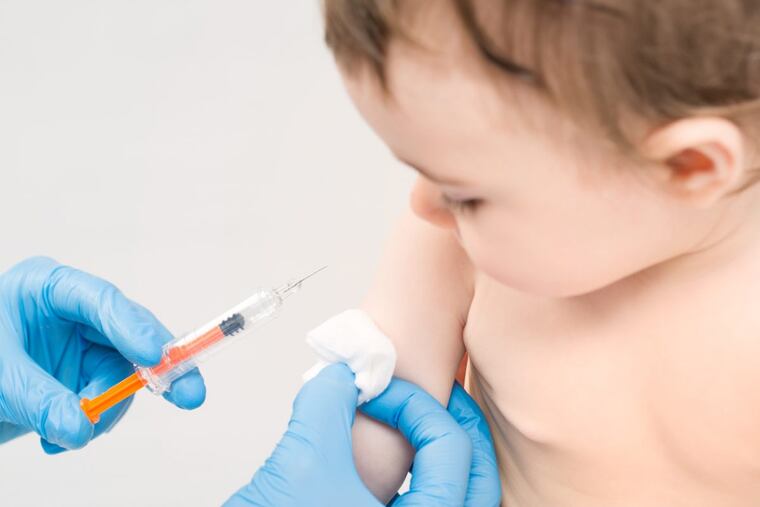Blue Cross study finds childhood vaccination rates up in Philly
The Philadelphia region and the nation overall saw increases in early childhood immunization rates, but there is room for improvement.

Early childhood vaccination rates among commercially insured households in the Philadelphia region and the nation showed improvement from 2010 through 2016, according to a study released Thursday by Independence Blue Cross.
The study found that 85.4 percent of all Philadelphia-area children whose Blue Cross-Blue Shield claims were reviewed for the six-year study had received the U.S. Centers for Disease Control and Prevention's recommended seven-vaccine series. Nationally, 73.5 percent of the insurer's young members were up to date in their immunizations.
The study suggests continued awareness, education, and compliance with the recommended well-child visits may have a role in improving vaccination rates, according to its authors.
"We would like to see 100 percent of kids vaccinated," said Anna Baldino, a medical director at IBC. "I think our results are great, but I really think there's room for improvement."
The IBC study includes only its customers, but it is the largest private insurer in the area. The study found that in the Philadelphia area, 82.9 percent of young BC-BS members born in 2010 had received the CDC's recommended vaccine series by age 2 years and 3 months. For children born in 2013, 86.7 percent were fully vaccinated by the same age.
The children in the IBC study from Philadelphia had a 94.7 percent immunization rate for measles, mumps and rubella vaccine. State data that include kids with all kinds of insurance do not compare directly, but school-age children also have been improving on immunizations. According to Pennsylvania Department of Health records, 93.9 percent of all Philadelphia kindergarten students in the 2016-17 school year had that vaccine.
Nationally, the news also was promising, with the youngest Blue Cross members' full vaccination rates growing from 69 percent for 2010 births to 77 percent by 2013. But there were significant regional differences. For example, North Dakota babies born in 2013 had the highest rates with 86 percent fully vaccinated, while Nevada had the lowest rate at 63 percent.
Among vaccine-preventable diseases such as measles, diphtheria, mumps, polio and pertussis, it doesn't take much for illness to spread. Baldino said that a few years ago, a child with measles visited one of the Disney parks. A month later, there were 125 known measles cases linked to that child, she said.
"You want to make sure as many people as possible are vaccinated," Baldino said.
For example, according to the study, a 94 percent measles vaccination rate is needed to ensure community immunity. The Philadelphia region's measles vaccination rate is 94.6 percent, but the national rate is only 91 percent.
One surprising finding from the IBC study: a national increase in the rate of parents refusing to get kids vaccinated. The refusal rate went from 2.5 percent in children born in 2010 to 4.2 percent for youngsters born in 2013. Philadelphia's rate of medical claims coded with a parental refusal was 3.8 percent over the six-year study, higher than the national rate of 3.3 percent. Reasons for refusal can range; some objections are made on religious grounds while other instances occur when a parent believes a baby is too young for multiple vaccines, despite evidence showing that the approved vaccine schedule is safe.
Reasons for the rising refusal rate were not established by the study.
The study did look at some of the reasons for children's not completing the vaccination series. For young children who were not fully vaccinated, 62 percent of those were due to missed well-child visits.